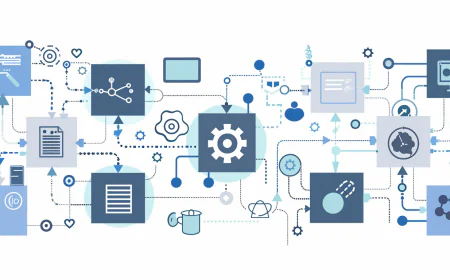Claude AI Masterclass: How to Achieve Best Performance and Connect Your Tools
Learn how to master Claude AI for maximum performance and productivity. Complete guide covering advanced prompting techniques, tool integration, API setup, workflow automation, and real-world applications. Discover expert strategies for content creation, data analysis, code optimization, and seamless AI tool connections. Perfect for developers, marketers, and professionals seeking to unlock Claude AI's full potential.

Introduction: Why Claude AI Stands Out
Claude AI represents a breakthrough in artificial intelligence, offering sophisticated reasoning, coding capabilities, and seamless tool integration. Unlike other AI assistants, Claude excels at understanding context, maintaining conversations, and working with external tools to solve complex problems.
In this comprehensive masterclass, you'll learn how to unlock Claude's full potential and integrate it with your favorite tools for maximum productivity.
Part 1: Fundamentals of Claude AI Performance
Understanding Claude's Capabilities
Core Strengths:
- Advanced Reasoning: Claude can handle complex logical problems, mathematical calculations, and multi-step analysis
- Code Generation: Supports 50+ programming languages with debugging and optimization capabilities
- Creative Writing: Produces high-quality content from technical documentation to creative stories
- Analysis: Processes documents, data, and images with detailed insights
- Safety-First Design: Built with constitutional AI principles for reliable, helpful responses
The Claude Model Family
Current Models (as of 2025):
- Claude Sonnet 4: Smart, efficient model for everyday use (model string: 'claude-sonnet-4-20250514')
- Claude Opus 4: Most powerful model for complex tasks requiring maximum capability
Part 2: Optimization Strategies for Best Performance
1. Master the Art of Prompting
Clear and Specific Instructions
❌ Poor: "Help me with my code"
✅ Better: "Review this Python function for performance issues and suggest optimizations for handling large datasets"
Use Structured Prompts
Task: [Clearly state what you want]
Context: [Provide relevant background]
Format: [Specify desired output format]
Constraints: [Mention any limitations]
Examples and Counter-examples
Create a function that processes user data.
Good example:
def process_user(user_id, data):
# validates and sanitizes input
Bad example:
def process(x):
# no validation
2. Leverage Context Windows Effectively
Context Management Tips:
- Keep relevant information at the beginning and end of long conversations
- Summarize key points when conversations get lengthy
- Break complex tasks into smaller, focused requests
- Use artifacts for substantial content that you'll reference later
3. Optimize for Different Task Types
For Analysis Tasks:
- Provide complete data upfront
- Specify the type of analysis needed
- Ask for structured outputs when appropriate
For Creative Tasks:
- Give style guidelines and tone preferences
- Provide examples of desired quality/style
- Specify target audience
For Technical Tasks:
- Include relevant technical constraints
- Specify programming languages or frameworks
- Mention performance requirements
Part 3: Tool Integration Mastery
Understanding Claude's Tool Ecosystem
Claude can integrate with various tools and platforms to extend its capabilities:
Built-in Tools:
- Web search for real-time information
- Web fetch for accessing specific URLs
- Code execution environment for testing and analysis
- File processing for documents, CSVs, and images
API Integration:
- Access Claude through the Developer Platform
- Integrate with your applications using the API
- Use Claude Code for command-line development workflows
Setting Up Tool Connections
1. Web Search Integration
Claude automatically searches when you need current information:
"What are the latest developments in quantum computing in 2025?"2. Document Processing
Upload files directly for analysis:
- PDFs, Word documents, spreadsheets
- Images for visual analysis
- Code files for review and debugging
3. API Integration Setup
Basic API Call Example:
import anthropic
client = anthropic.Anthropic(
api_key="your-api-key-here"
)
message = client.messages.create(
model="claude-sonnet-4-20250514",
max_tokens=1000,
temperature=0,
system="You are a helpful assistant focused on data analysis.",
messages=[
{
"role": "user",
"content": "Analyze this sales data and provide insights"
}
]
)
print(message.content)
Advanced Tool Integration Techniques
1. Custom Workflows
Create automated workflows that combine Claude with your existing tools:
# Example: Automated report generation
def generate_weekly_report():
# Fetch data from your database
data = fetch_sales_data()
# Process with Claude
analysis = claude_analyze(data)
# Format and send report
send_report(analysis)
2. Multi-Tool Chains
Combine multiple tools for complex tasks:
- Web search for latest market data
- Process internal company data
- Cross-reference and analyze
- Generate actionable insights
Part 4: Advanced Performance Techniques
1. Conversation Management
Maintaining Context:
- Use conversation summaries for long interactions
- Reference previous artifacts and key decisions
- Update Claude on changes in requirements
Iterative Refinement:
Step 1: "Create a basic marketing strategy for our product"
Step 2: "Now refine this strategy for the European market specifically"
Step 3: "Add budget considerations and timeline"
2. Structured Output Techniques
XML Tags for Organization:
Please organize your response as:Your analysis here Specific actions Implementation plan
JSON for Data Structures:
Format the results as JSON:
{
"summary": "Brief overview",
"details": ["point 1", "point 2"],
"confidence": "high/medium/low"
}
3. Performance Monitoring
Track Response Quality:
- Use the thumbs up/down feedback system
- Monitor consistency across similar tasks
- Test different prompting approaches
Optimize Based on Results:
- Refine prompts based on output quality
- Adjust context length for better performance
- Experiment with different model parameters via API
Part 5: Real-World Applications and Case Studies
Case Study 1: Content Marketing Automation
Challenge: Create consistent, high-quality blog content
Solution:
- Use Claude to research trending topics
- Generate content outlines
- Write full articles with SEO optimization
- Create social media promotional content
Implementation:
Case Study 2: Data Analysis Workflow
Challenge: Analyze complex business data quickly
Solution:
- Upload data files to Claude
- Request specific analysis types
- Generate visualizations and insights
- Create executive summaries
Results: 80% faster analysis with deeper insights
Case Study 3: Software Development Support
Challenge: Code review and optimization
Solution:
- Submit code for review
- Get optimization suggestions
- Generate test cases
- Create documentation
Implementation with Claude Code:
# Install Claude Code
npm install -g claude-code
# Use in your project
claude-code review src/main.py
claude-code optimize --performance src/algorithms.py
claude-code test src/utils.py
Part 6: Best Practices and Pro Tips
Communication Best Practices
Be Conversational but Precise:
- Ask follow-up questions when needed
- Provide feedback on responses
- Build on previous interactions
Use Progressive Disclosure:
- Start with basic requests
- Add complexity gradually
- Reference previous work
Advanced Prompting Techniques
1. Role-Based Prompting:
2. Chain-of-Thought Prompting:
"Let's work through this step by step:
- First, identify the key metrics
- Then analyze trends over time
- Finally, suggest actionable improvements"
3. Few-Shot Learning:
Provide examples of desired input/output patterns:
Here are examples of the analysis format I need:
Example 1:
Input: [sample data]
Output: [desired format]
Now analyze this new dataset in the same format:
[your data]
Tool Integration Best Practices
1. Security Considerations:
- Use environment variables for API keys
- Implement proper authentication
- Monitor API usage and costs
2. Error Handling:
try:
response = client.messages.create(...)
return response.content
except anthropic.APIError as e:
print(f"API Error: {e}")
return "Error processing request"
3. Rate Limiting:
- Implement exponential backoff
- Monitor usage limits
- Cache results when appropriate
Part 7: Troubleshooting and Optimization
Common Issues and Solutions
Problem: Responses are too generic
Solution: Provide more specific context and examples
Problem: Claude seems to "forget" earlier conversation
Solution: Summarize key points and reference important decisions
Problem: Code suggestions don't work
Solution: Specify your exact environment, versions, and constraints
Performance Optimization Checklist
- ☐ Clear, specific prompts
- ☐ Appropriate context length
- ☐ Structured output requests
- ☐ Regular feedback and iteration
- ☐ Tool integration testing
- ☐ Security measures in place
- ☐ Error handling implemented
- ☐ Performance monitoring active
Conclusion: Mastering Claude AI
Claude AI represents a powerful ally in productivity, creativity, and problem-solving. By following the strategies in this masterclass, you'll be able to:
✅ Achieve optimal performance through strategic prompting and context management
✅ Seamlessly integrate tools for enhanced capabilities
✅ Build automated workflows that save time and improve quality
✅ Handle complex, multi-step projects with confidence
✅ Create professional-grade outputs across various domains
Next Steps
- Practice with different prompt styles to find what works best for your use cases
- Experiment with tool integrations relevant to your workflow
- Build a prompt library of your most effective templates
- Join the Claude community to share insights and learn from others
- Stay updated with new features and capabilities
Resources for Continued Learning
- Official Documentation: docs.claude.com
- API Reference: docs.claude.com
- Support: support.claude.com
- Prompting Guide: docs.claude.com/en/docs/build-with-claude/prompt-engineering/overview
🚀 Ready to become a Claude AI master?
Start implementing these techniques today and unlock the full potential of AI-assisted productivity!
This masterclass was created for myskillmaster.org to help you achieve professional-level results with Claude AI. Practice these techniques and watch your productivity soar!
What's Your Reaction?
 Like
0
Like
0
 Dislike
0
Dislike
0
 Love
0
Love
0
 Funny
0
Funny
0
 Angry
0
Angry
0
 Sad
0
Sad
0
 Wow
0
Wow
0











































